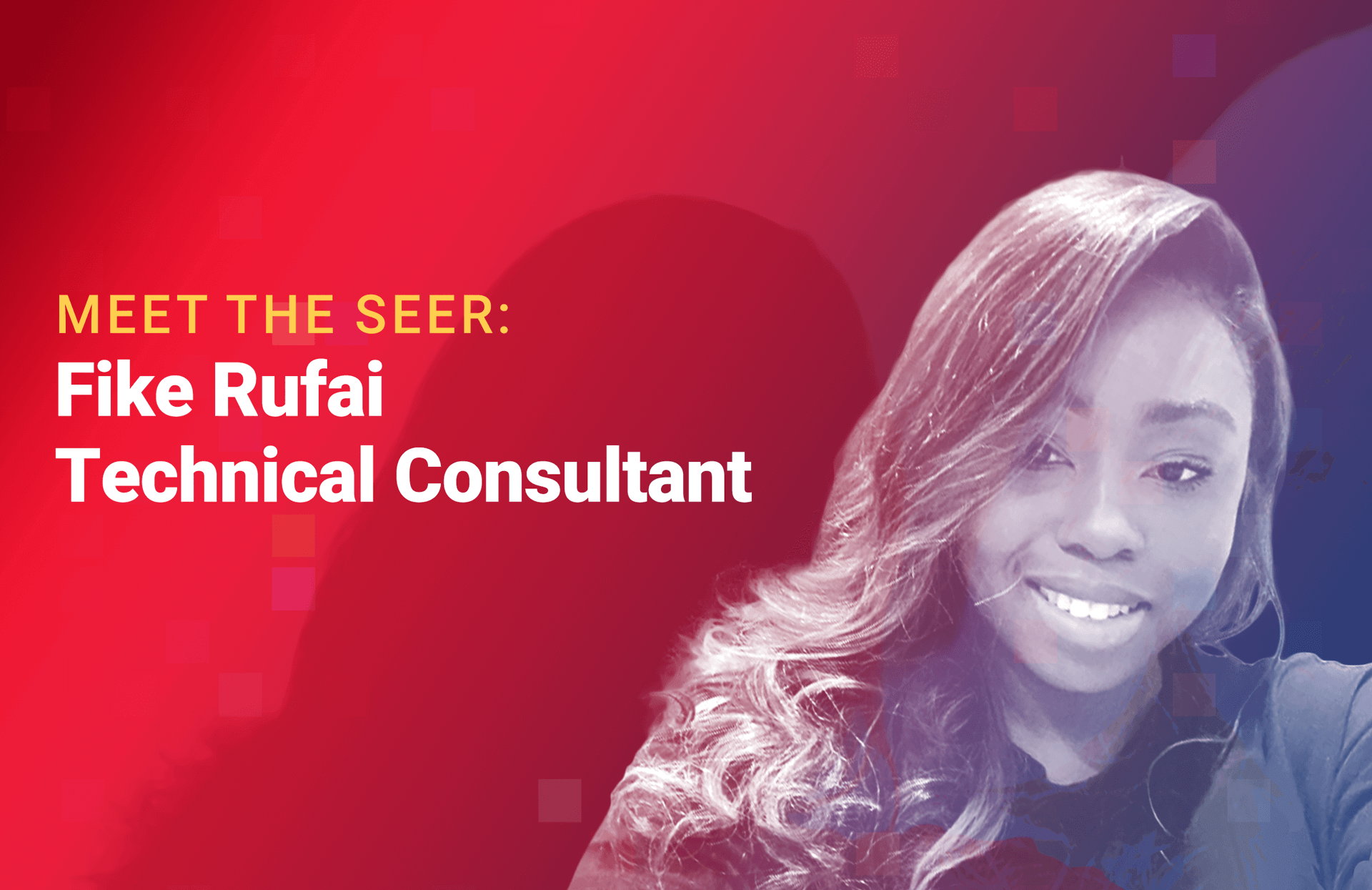
Meet the Seer: Fike Rufai
Discover more about the people in our team and how they came to work in cybersecurity.Fike joined Panaseer as a Technical Consultant in our Customer Success team in June 2021, and tells us about her impressive re-skilling to enter a cybersecurity role.

What was your dream job growing up?
I don’t know if I ever had a dream job – maybe getting paid to have fun every day and enjoy my life!What brought you to cybersecurity and Panaseer?
I studied economics at the University of Kent, then a master's in international finance and political relations at Loughborough. So, my education didn’t give me any experience in tech.While I was at university, I got a job in a high street bank as a cashier. I thought I had it all figured out: “OK, I’ll work as a cashier, then apply for a head office or grad role. Take the career in banking and really fly with it.”But that wasn’t the case. I networked like crazy within the organisation, applied for different grad schemes and head office roles, but didn’t get any. Then I looked at other financial services companies and applied for an application support role. It wasn’t until halfway through the interview that I realised it wasn’t a finance job, but a tech job. I was surprised, but went for it anyway. In the 18 months I was there, I really enjoyed the problem solving, working with the analytics software, and customer interaction side of the role, much more than I thought I would.But I wasn’t really feeling the culture. I didn’t want the corporate dress code or the politics. I wanted to move to an organisation that was more authentic to who I was. That led me to an implementation consultant role in a smaller company. It was really tight knit – everyone made you feel super comfortable and I was free to be myself. I think that’s really important in any job.During lockdown I was looking for a bigger challenge and decided I wanted to get into cybersecurity. I found a government-funded training programme that was supposed to help with the skill shortage and help train more women to get into the cybersecurity sphere. The course lasted for approximately a year and consisted of an hour session on Zoom every Wednesday after work and homework to complete for the following week. I learnt different coding languages – HTML, CSS, Python, JavaScript, etc, outside of the bit of SQL I had done in previous roles.When I started looking for roles in cybersecurity, I almost didn’t apply to Panaseer because I didn’t meet all the criteria. But I remember someone telling me once that if a job has ten criteria, a man is more likely to apply if he only fills four, but a female will want to meet at least seven or eight before they apply. So, I made the decision to go for it as I thought I had nothing to lose.I prayed about it and I told myself: “I'm not going to be anybody else but me. I'm not going to code switch. I'm not going to embellish anything. I'm just going to go in. Here's my experience. Here's my personality. And, if you like me, great.”So, I just gave it a shot, and here we are.How do you describe your job to your mum/dad/friends?
For some I say I work for a company that develops a software platform that ingests data from different business, IT and security related applications and allows organisations to view their security landscape as well as monitor and review any security control gaps within their organisation.And for the others I say I work in cybersecurity and just leave it at that.Tell us about a day in your life.
Every day looks different, so it might be better to say what I did over the course of two days last week.- I had a meeting with a customer to finish upgrading one of our applications.
- I took 50 minutes to talk to Allegra, our in-house life-coach. It doesn’t have to be work-related, so you can talk about anything in your personal life confidentially.
- I helped a customer resolve some issues using SQL.
- I had a meeting with our project management function to discuss the progress of a project I’m working on.
- A meeting with the product engineering team to discuss new functionality. Meeting with a customer alongside the sales team to help sell specific product functionality in a proof of concept.


